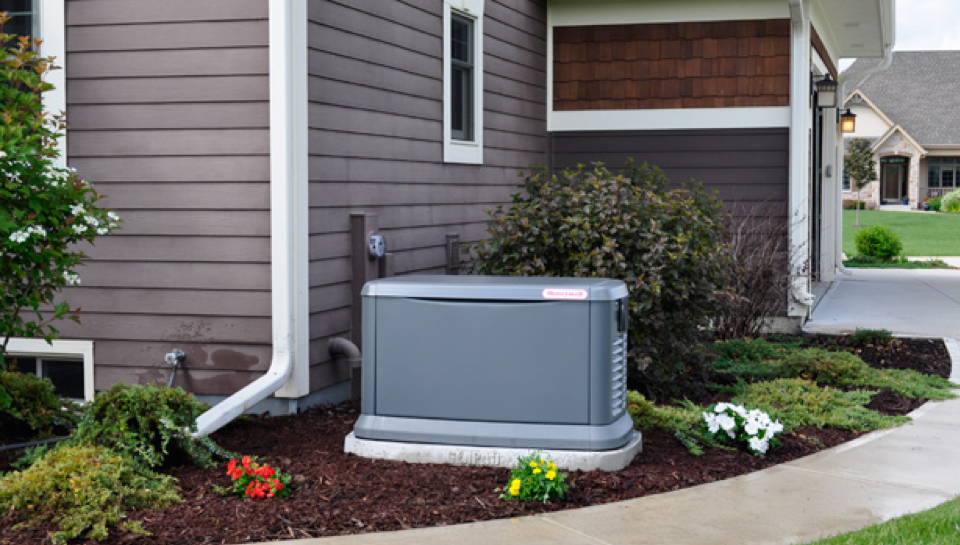
How to Manage a Distributed Remote Team Nov 23, 2024


How to Secure CRM Software and Ensure Data Privacy Sep 30, 2024



How NLP Can Transform Your Communication Skills Aug 27, 2024

Essential HVAC Maintenance for Rental Properties Aug 26, 2024

Maximizing Equipment Lifespan with CMMS Software Aug 08, 2024

Top Business Tools for Streamlining Your Operations Aug 01, 2024
How to Calculate Generator Output
Jan 12, 2020 02:26
A thinking buyer, as a rule, studies various generator characteristics: mobility, weight, duration of operation, type of engine, number of phases, AVR presence, automation capability and much more. Equally important is the price of the generator, as well as the stability and reliability of the brand and even design.
But with all sorts of preferences, the main issue remains the power of the selected source of electricity. Power is the first and most important thing when choosing a device. If the generator power is selected incorrectly, the consequence may be an overload of the device and its subsequent stop or even breakdown.
Long-term operation of the generator at the limit of possibilities reduces its lifespan; moreover, fuel consumption also becomes more significant. Unused power is the flip side of the coin. Why pay a lot of money for a powerful generator and use only part of the possibilities? This is not logical and uneconomic.
We have listed the basic rules on how to calculate the power of the best home generator correctly, and it is not at all as difficult as it seems.

How to Correctly Calculate
A careful calculation of the power of electrical appliances with consideration of all possible situations is the key to the correct choice of generator. How to prevent overloads and everything to work in the house, especially if the electricity was turned off for a long time? This question is asked by many potential generator buyers who want to choose an electric device for the home.
The first step is a complete inventory of all electrical appliances in the house. Take a sheet of paper and a pen or use a laptop or smartphone to write things down. Write the name of the device and its power in kilowatts (it is always indicated directly on household appliances). Calculate the total power. This will be a rough estimate.
You need to find out what electrical appliances are needed, which ones are desirable and which ones you need to forget about during a power outage. For example, lighting and a refrigerator are a must. In winter, the heating and a gas boiler are very important. If the motor pumps water into the house, it must also get power in the first place. The same applies to the kettle and electric stove. All this is important and necessary.
Computer, TV, phone and laptop chargers are optional. Although, this is the first necessity nowadays. But machine wash, ironing, and vacuuming can be postponed. Also consider which current consumers will be connected to the generator simultaneously and permanently, and which from time to time. That is, you can turn off the stove and turn on the kettle. Or turn off the lights and watch TV. And vice versa.

Generator Power
Absolutely all jonsguide.org generators have two important parameters: rated and maximum power.
● Work at maximum power has time limitations; it’s different in different models: from a few seconds to thirty minutes. After that, thermal protection comes into action, and the generator is turned off.
● Within the limits of rated power, the generator can work for a rather long time or until the fuel in the tank runs out.
To correctly calculate the device capacity, it is enough to take one important nuance into account — the inrush current coefficient. Despite the short duration (from fractions to several seconds), it has a significant impact on the mini-power plants (power generators), stabilizers and uninterruptible power supplies operation.

Let’s be honest; OTT platforms have completely changed our movie-watching experience and made entertainment just a click away. A few years ago, who would have thought that watching regional or international movies could be this easy, convenient, and tailored to our budget and preferences? And, yet here we are enjoying the options of Marathi, Malayalam, Hindi, Gujarati, Tamil movies, and a lot more at our fingertips. Read more

Electronic Logging Devices (ELDs) have revolutionized the trucking industry by streamlining logging practices and ensuring compliance with federal regulations. Designed to monitor a vehicle’s engine and automatically record driving hours, ELDs replace traditional paper logs and provide an efficient solution for tracking Hours of Service (HOS). If you're looking to complement your fleet's technology, partnering with tools like a reliable truck dispatch service can further optimize operations and keep your business running smoothly. Read more

The HONOR Magic 7 Pro price in ksa makes it an appealing option for those looking for a high-end smartphone. This advanced device stands out with its sleek design and robust build quality. This blog delves into the details, examining what makes the HONOR Magic 7 Pro unique, from the materials used to its overall durability and user experience. If you’re considering purchasing a high-end smartphone that balances aesthetics and functionality, this review of the HONOR Magic 7 Pro’s design and build quality will provide you with all the information you need. Read more
TECH NEWS
Jan 11, 2025 14:55
Copyright © Fooyoh.com. All rights reserved. User Agreement | Privacy Policy | Contact us
| Advertising
| About us
| Careers


















































